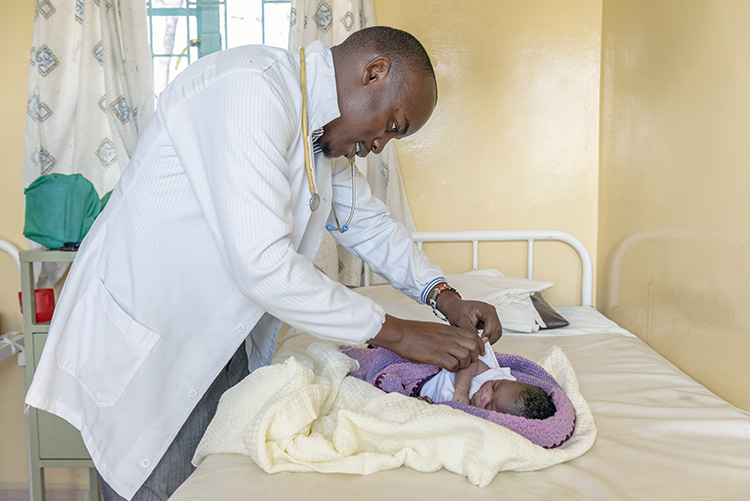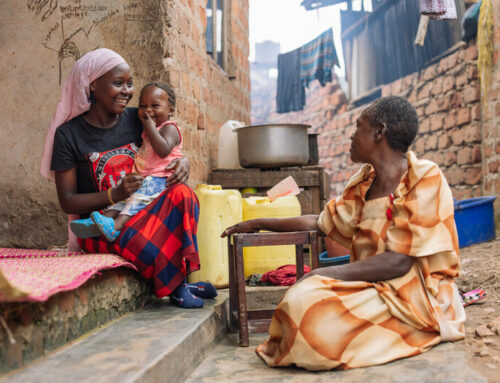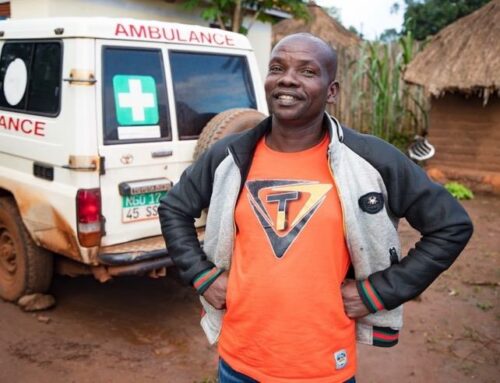Training nurses to provide quality maternal care to women in Kenya
Chris lives in Kenya and has been a nurse since 2010. He currently works at a health facility in Archer’s Post, a settlement four hours away from the capital of Nairobi.
The facility is modest in size but serves the people of Archer’s Post and the nomadic Samburu community who walk long distances from their remote villages to the health facility. Chris says, “Unfortunately, at this facility we do not have a doctor. We only have nurses and support staff, but we are really doing great.”
According to Chris, “Our most common cases are bites from animals like snakes, upper respiratory infections, and malaria. Malaria is very common because we have the river right on the other side over there. So, you find up to 5 or 6 cases of malaria in a week.”
Through our USAID-funded Afya Timiza Project, Amref Health Africa has supported the health facility where Chris works to improve their family planning, maternal and child health, immunization services, and wound and infections care since 2017. Chris smiles as he tells us, “We can talk until tomorrow about all the great things Amref has provided for us.”
One of the ways Amref Health Africa has helped the health facility is with computers for e-Learning. E-Learning refers to educational courses that are delivered entirely online, outside of a traditional classroom setting. E-Learning allows health workers like Chris to improve their skills and continue their education without taking them away from their families and patients.
Chris tells us, “The computers have been installed with a lot of continuing education programs. We use them when we are providing Continuous Medical Education sessions for other health workers every Friday. The e-Learning has allowed us to refresh our skills and to give knowledge to those who have not been trained.”
Everyone at Chris’s health facility received training through e-Learning and it has made a noticeable difference in the care they provide for the community:
“There was a great improvement. We used to have a lot of neonatal deaths. We did not have good mechanisms for identifying the causes of these deaths and preventing these same causes from happening.
But after we all took some e-Learning courses, we are now able to identify complications very early on, take action, and prevent neonatal and maternal deaths from happening. If you see our performance data, you’ll see that we have not had a lot of deaths from the time we began using e-Learning until now.
We’ve also learned a lot about hand-washing, caring for and preventing infections…A lot has really improved.”
Our Afya Timiza (Swahili for “Achieving Health”) Project has also established Community Units – small teams of health workers that serve as outposts for the larger health facility. These Community Units serve people living in more remote villages farther away from the health center. To support these Community Units, we trained Community Health Workers – community members elected by their community to help monitor everyone’s health.

Chris says, “We came to realize that before we had Community Units it was very hard for us to deliver health education to the mothers in the villages. But now we have two Community Units and several Community Health Workers who are trained in basic medical services by Amref. They can refer pregnant women early enough for antenatal care and immunization services for babies.
They can also recognize early signs of diseases. It’s really doing good for us. You see, we are very few, we cannot reach everybody. But if there is something that we want all the communities to know, we just go through the Community Units and Community Health Workers and the knowledge reaches them very fast.”
Chris and his colleagues say that more and more pregnant women come to the health facility for antenatal care visits and to deliver their babies safely with trained health workers.




